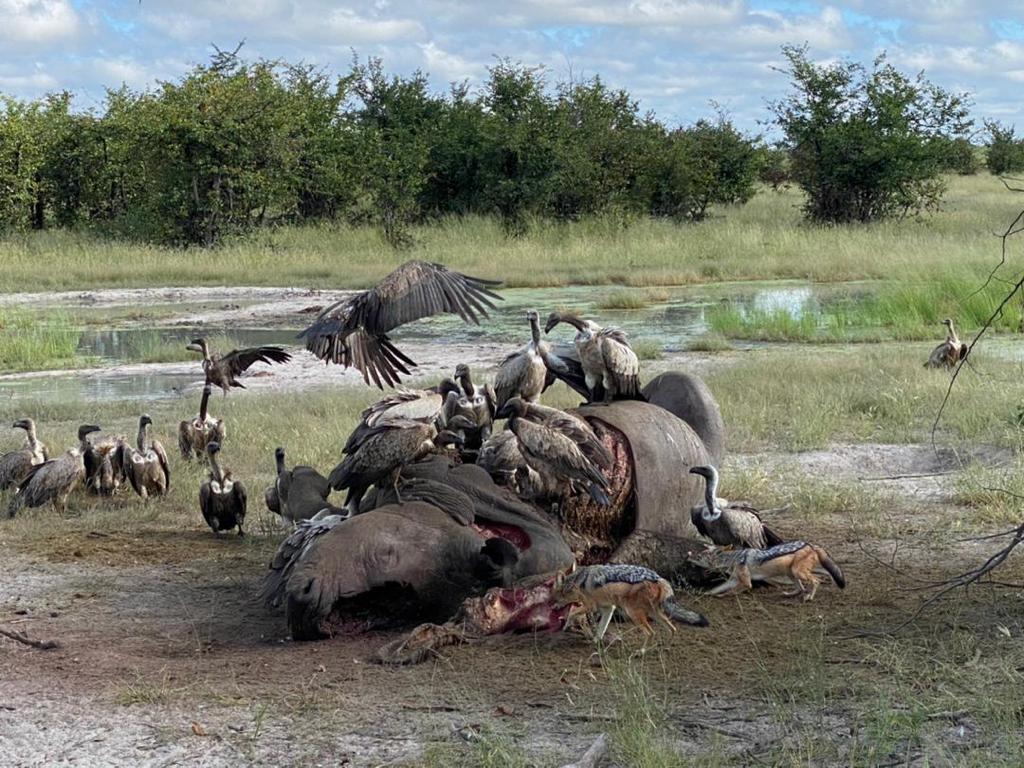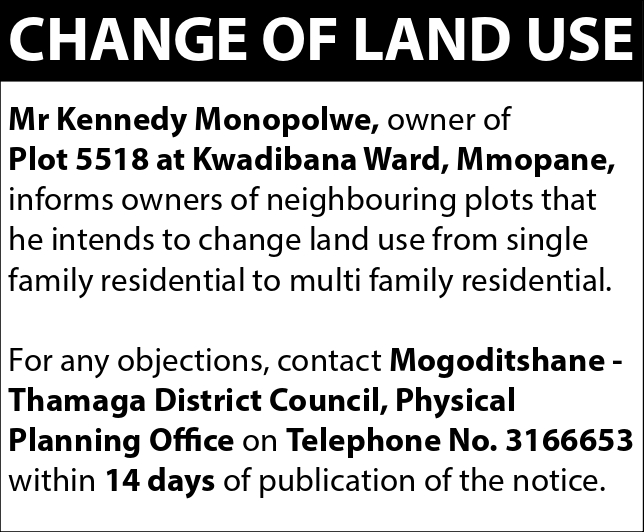Suspicion is growing that poachers from neighbouring countries are working with detailed inside information because they know the exact location of the animals they want and have been targeting rhinos wearing collars with expired batteries lately, writes OSCAR NKALA
The family of three were all shot with a .375 hunting rifle at Chitabe near the Qorokwe Lodge in the NG32. Site assessments of the carcasses revealed that the bull and the cow rhino were shot once each while the calf was hit twice. A post mortem has since revealed that the cow was well in the second term of pregnancy. A single .375 bullet case was recovered from the scene.
Sources close to ongoing rhino poaching investigations say the carcasses of a rhino bull, a cow and a calf were discovered a few hours after the poachers struck a sanctuary owned by Rhino Conservation Botswana. “The carcasses were still fresh when the law enforcement teams arrived,” said a source. “Both adult rhinos were dehorned. We suspect this was done by one of several Zambian poaching gangs that have taken advantage of the full moon to enter Botswana.”
“The poachers work with local help and there is suspicion that employees of local safari camps and some security personnel are giving away rhino locations to poachers. What makes it suspicious is that most of the poaching takes place within range of Botswana Defence Force bases and safari campsites, yet none are detected. With over 100 rhinos dead, not a single arrest or conviction has been made.”
The source added that the latest incident has brought the number of rhinos killed in two weeks to 12 and the national rhino death toll since 2018 to 120.
In a statement released on March 2, Department of Wildlife and National Parks director Dr Kabelo Senyatso dismissed as misleading a Facebook post by former President Seretse Khama Ian Khama who posted images of the Saturday rhino slaughter in the Okavango Delta and described it as evidence that government was failing conservation.
“DWNP is aware of a social media post that purports that in the last 18 months, 120 rhinos have been slaughtered and that after Corona, there will be none left for tourists to come and watch.
“DWNP has a long standing policy of not discussing operational and security sensitive anti-poaching information in the media as that only serves to increase the security risks that our on the ground operatives face,” Dr Senyatso said.
Without providing actual figures, Dr Senyatso went on to claim that contrary to claims of an upsurge in poaching during the Covid-19 lockdown, the poaching of all wildlife species in Botswana declined by 70% between March 2020 and March 2021.
Nevertheless, The Botswana Gazette has since established that most of the rhinos at the RCB facility are vulnerable to poaching because they do not have surveillance collars. A few such gadgets installed around 2015 have been rendered obsolete because the batteries had a lifespan of three years.
The poachers seem to know this because they have been targeting rhinos with dysfunctional collars lately. “RCB has really lost control and the poachers, who seem well-informed from the inside, are literally running circles around the BDF,” said the source.
Commenting on the rhino poaching crisis in Botswana, renowned wildlife conservationist Pieter Kat said the government must acknowledge that the rhino poaching crisis is out of control and seek external help. “Botswana does not publish rhino poaching statistics,” Kat said. “That’s pretty strange but that’s the way it is. From the media and private communication, scores and scores of rhinos have been killed to-date. As in South Africa, the poachers operate with impunity. They come from Zambia, crossing into Botswana via Namibia and onto the Okavango Delta and Chief’s Island where most of the poaching takes place.”
The conservationist said Botswana can still do better by publishing annual rhino poaching statistics, acknowledging that the rhino poaching crisis is out of control and seeking external help to prevent a second extinction of the species. Rhino carcasses found on Chiefs Island, Mombo




